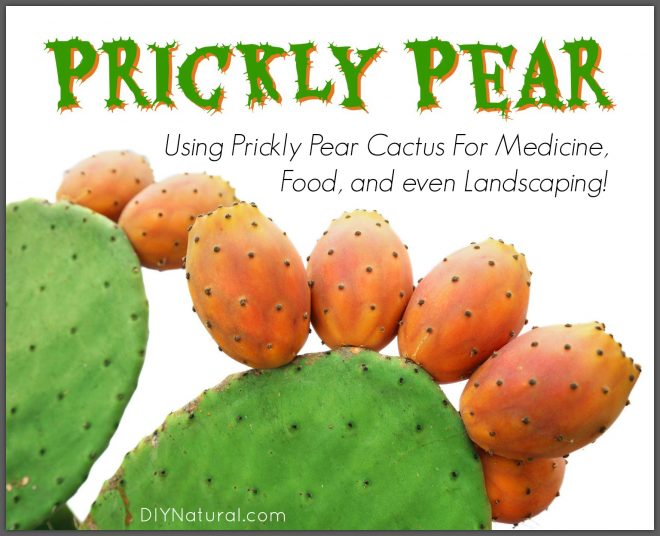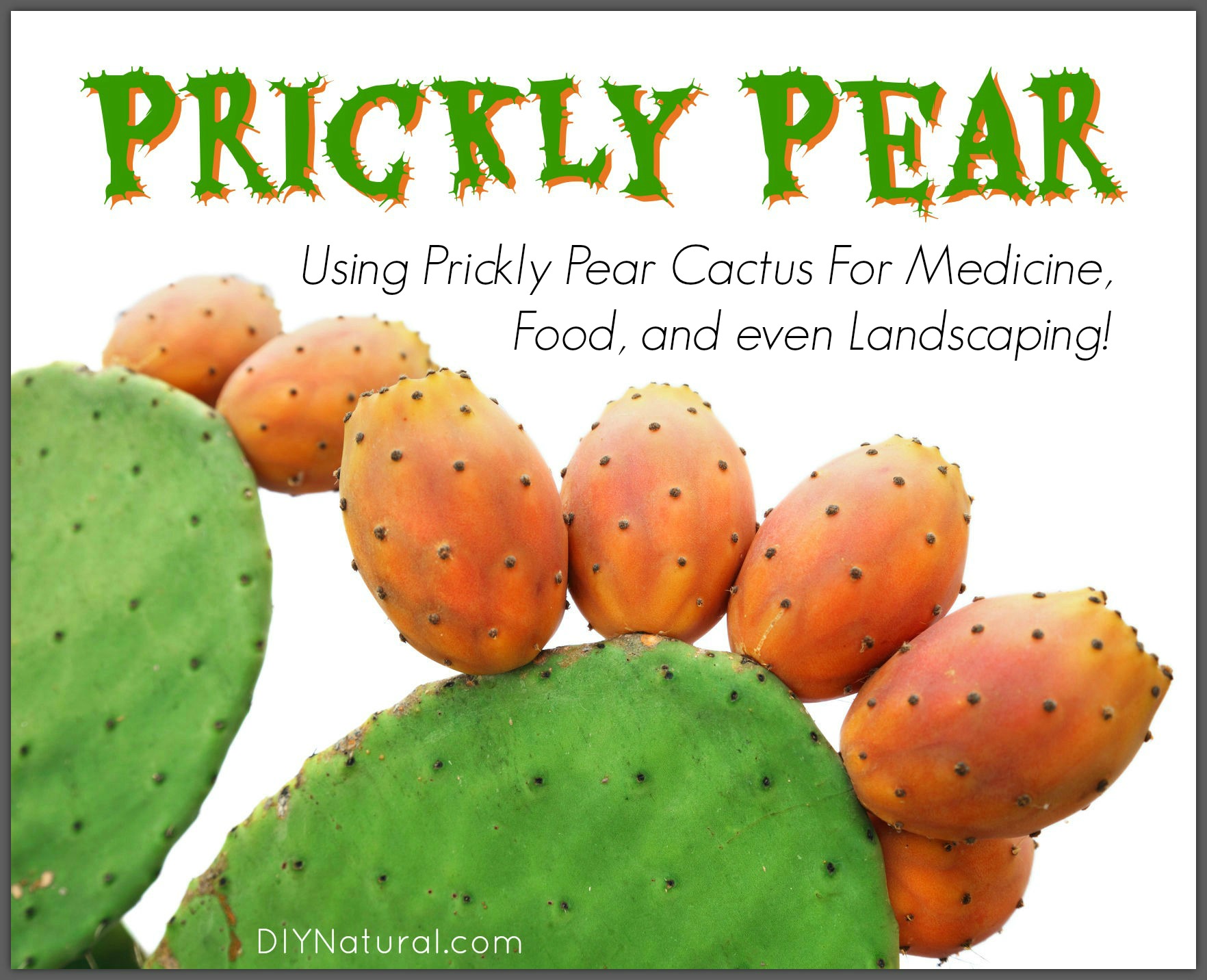
When I was a young girl growing up in Minnesota, my family would take trips around the area. During one trip into Wisconsin, I saw what I thought was a prickly pear cactus. My mom and dad kept telling me I was nuts, but it turns out that I was right.
Prickly Pear – A Cold Tolerant Cactus
Optunia, or Prickly Pear Cactus, is one of the only cold tolerant cacti. It is native to the Americas, but has spread to many other parts of the world. You will find it growing in Mexico westward, into the southeast, up into Canada, and even in Minnesota and Wisconsin. It grows in both tropical and temperate regions, including South Africa and Australia.
An Edible Cactus
Not only is the fruit from the prickly pear cactus edible, but the leaves, or pads, are edible as well. The fruit contains many nutrients, including the following (per 100 grams):
- 3.6 grams of fiber
- 17% Vitamin C
- 24% magnesium
- an appreciable amount of protein for a plant, and vitamins B6 and B2
The small spines on the fruit must be removed before eating. The spines can be removed by peeling, by rubbing with plant material using friction, or burned off using a flame. Roasting over an open fire will not only burn off the spines, but will also increase the juice content.
The fruit can be made into jelly, drinks, desserts, and candy. (See our recipe for Prickly Pear Syrup.) The pads on most varieties can be fried as a vegetable. The young stem fragments are called nopales in Mexico, and are served with meat or eggs. They can also be pickled and canned.
Cactus as Medicine
The prickly pear cactus has been used in the southwest and into Mexico and South America for medicine for hundreds of years. They contain phytochemicals and polyphenols that can help extend cell life. The pulp and juice has been used in wound care and internally for digestive and urinary tract problems.
Other Uses for Cactus
The mucilage from the flesh of the pads can be used to purify water. A study at the University of South Florida is looking at the possibility of large scale water treatment with cactus.
Prickly pear cactus, among others, has long been used as fencing. It can be used to keep livestock in or to keep predators out. It has also been used as a barrier in Cuba at Guantanamo Bay.
Growing Prickly Pear Cactus
There is one simple rule for planting prickly pear cactus. Place them on the ground and water. Really, that’s it. Cacti have the ability to reproduce from their pads. When the pads falls off the plant, it will take root and grow from that point. This makes it very easy to propagate these plants.
Spring and summer is the best time to grow cactus. Most species love the heat and some love moisture and humidity. Lay the pad on a pot with soil. The type of soil will vary from area to area, but most prefer soil that is not so good for most other plants. Desert sand is common in the Southwest, and acidic clay in the Appalachian Mountains. Both of these conditions, though far opposites of each other, will grow prickly pear cactus just fine. Most cactus need well drained soil, but the prickly pear seems to thrive almost anywhere.
Prickly Pear Granita
Prickly pear cactus makes great juice for use in drinks and desserts. Granita is a quick and easy way to enjoy the juice in a cool refreshing way.
Ingredients
- 6 medium prickly pears
- 1 cup filtered water (find the best water filtration systems here)
- 2 tablespoons natural sweetener of your choice (I like stevia powder)
- juice from one lime
Directions
Peel and chop the prickly pear cactus and puree in a blender. In a saucepan, combine the water and stevia. Bring to a boil and add the prickly pear puree and lime juice. Reduce to a simmer for 5 minutes. Cool and pour into a glass baking dish. freeze for an hour until large ice crystals form. Rake a fork across the ice. Return to the freezer and repeat a few times. Scoop into a bowl and enjoy!
Add more or less lime juice or sweetener to adjust the tartness or sweetness.
Have you ever eaten prickly pear? If so, tell us what you think!
*******




Hi! THX for your post on this Mexican sacred plant, which is now cultivated in the 5 continents.
I am pursuing the use of nopal (prickly pear tree) pads for massive and low cost biofuels production, but am also VERY interested in producing non toxic biofilm (for food packaging), from its mucillage, as well as other bioproducts. Recently, a patet for producing better and trully ecological bricks from municipal solid waste, using mucilage as binder, has been issued. Tunas (fruit) are an excellent food for the brain. The seeds of the tuna contain an oil demanded and used by the cosmetics industry and the pads juice is an EXCELLENT remedy or cure for diabetes and obesity. You can buy nopal juice at Walmart. Our cost of agricultural production is less than one US cent per kilo of this amazing plant and we get an annual yield of up to eight hundred tonnes of pads per hectare. Nopal will bring health and wealth to the people that cultivate it. I just love it and eat it every day!
I had this fruit, prickly pear while in Sicily . I learned how to peel it and eat fresh. Your granita sound so good. Will have to try it. Thanks
Jo, how did you learn to peel it and eat it fresh? in Sicily?
We where at a family party and one of the men had heavy duty gloves on and then hi sliced it from top to bottom and the peeled it back and then we just ate it fresh..it was very tasty. I will try them again when I see them in the grocery story.
thanks, that sounds like a helpful way to handle them. I live in urban setting, ground apt. where I would like to plant a couple of prickly pears by vulnerable ground level windows. Thanks, Deborah, for another helpful post. I did not realize they could grow in cold climates! and that they are that easy to grow. The areas I would like to put them is bare hard earth.
Interesting!
And thank you to everyone else for all the great additions!
Thanks Arturo! That’s some great information!